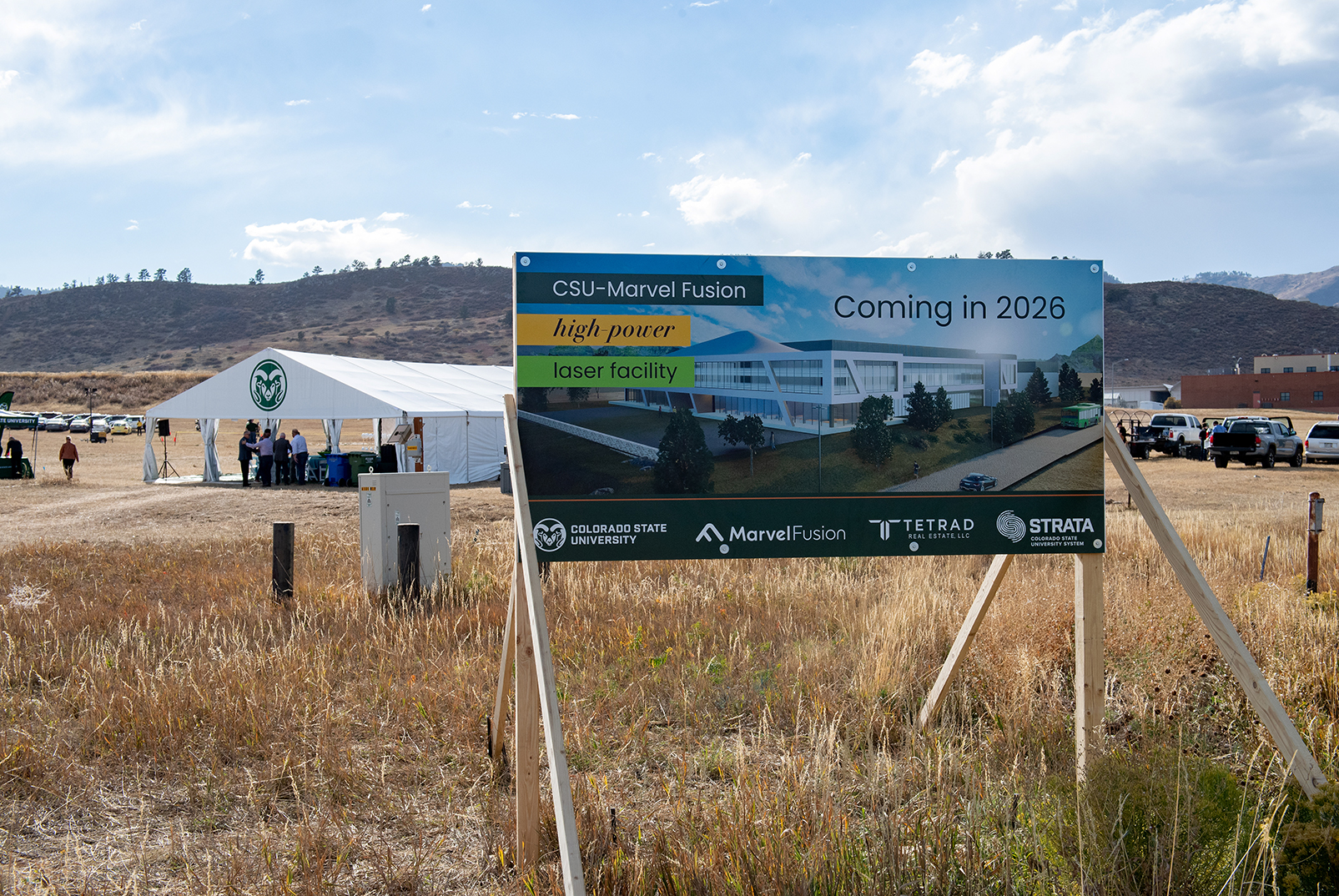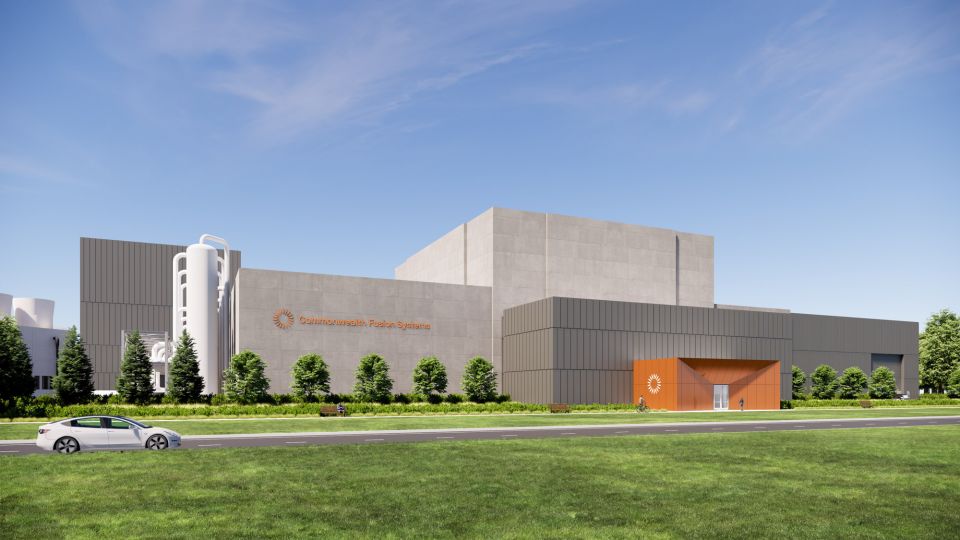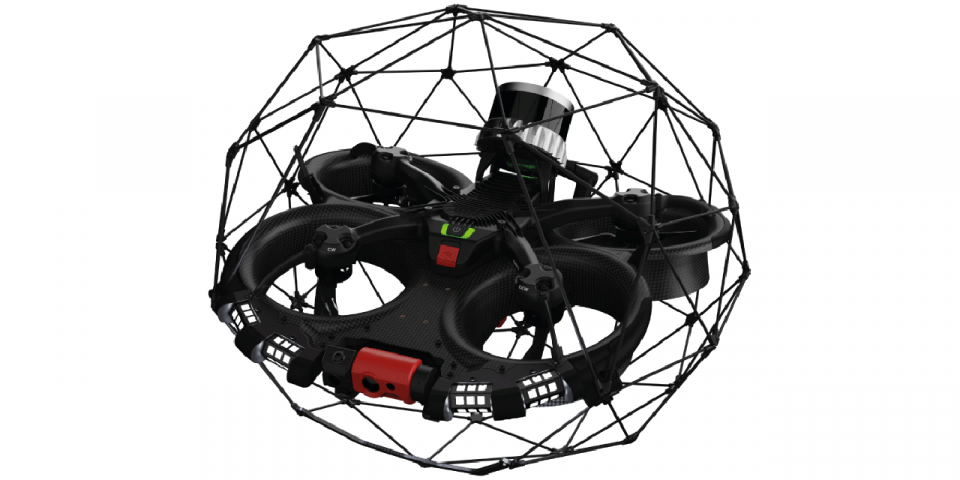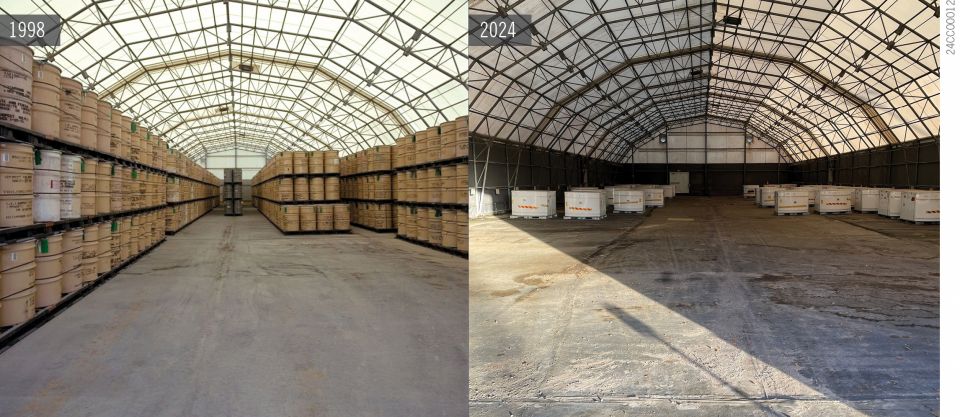CSU is not just a research partner of Munich, Germany–based Marvel Fusion and one of more than 1,000 LaserNetUS members; it is also the coleader (with the DOE’s SLAC National Accelerator Laboratory) of one of three Inertial Fusion Energy Science and Technology Accelerated Research (IFE-STAR) program hubs announced by DOE-FES in December 2023 to support inertial confinement fusion energy development. The hub, called RISE, is getting $16 million over four years.
ATLAS’s power: CSU’s existing laser facilities and the new facilities—set to come on line in mid-2026 in a building to be known as the Advanced Technology Lasers for Applications and Science (ATLAS) facility—will collectively be known as the Advanced Laser for Extreme Photonics (ALEPH) Center. The new 71,000-square-foot ATLAS facility will feature an upgraded version of an existing ultrahigh-power laser developed at CSU in combination with two new lasers provided by Marvel Fusion.
ATLAS will contain a cluster of high-intensity, high-repetition-rate lasers that can be configured to fire simultaneously at a single fusion target. Together, they can deliver about 7 petawatts of power—over 5,000 times the electrical generation capacity of the U.S.—into a focal spot roughly the width of a human hair for approximately 100 quadrillionths of a second, according to CSU. While that capability is what will make ATLAS most useful for fusion energy developers, the trio of lasers could also be used independently and in other combinations to tackle fundamental research.
Also according to CSU, the ATLAS facility will support interdisciplinary work in topics like medicine, including cancer treatment. Other potential research includes microchip lithography and design and detailed X-ray imaging of rapidly moving objects, such as airplane engine turbines in full motion.
Groundbreaking: CSU president Amy Parsons hosted a ground-breaking ceremony on October 16, inviting remarks from Geraldine Richmond, undersecretary for science and innovation at the DOE, Marvel Fusion chief executive officer Moritz von der Linden, and other stakeholders.
“As a top institution recognized both for research and for sustainability, CSU is a fitting home for this facility,” Parsons said. “We have been a leader in laser research for decades, and our faculty are advancing critical technologies. This new facility will house one of the most powerful lasers in the world and establishes CSU as a nexus for laser fusion research.”
CSU’s leadership in laser research is primarily due to work by professors Jorge Rocca and Carmen Menoni, according to the university. Menoni is CSU’s director of the IFE-STAR hub.
Richmond highlighted the DOE’s extensive partnership with CSU around laser research in her comments at the October 16 ground-breaking.
“I’m excited for the important research through this private-public partnership happening with Marvel Fusion at Colorado State University,” she said. “Laser development and experiments fit within our long-term goal of reaching fusion energy, but equally important is uncovering what we will learn in this process that will help us ultimately achieve that goal.”
Marvel’s approach: Marvel Fusion was founded in Munich, Germany, in 2019, and has established a subsidiary in Fort Collins, Colo., to take advantage of what the company says will be “one of the most powerful laser facilities in the world.”
Heike Freund, Marvel’s chief operating officer, welcomed the ground-breaking as “an exciting new chapter in the partnership between Marvel Fusion and Colorado State University as we move forward with constructing a facility that will drive the future of fusion energy.”
Marvel’s approach to fusion would use multiple pulsing laser beams converging on a fuel target composed of alternating nano-scale rods and solid fusion fuel. The rods “act as an entrance for the laser pulses, coupling the laser energy efficiently into the target,” according to a video produced by Marvel Fusion. “The pulses cause electrons to rapidly evacuate from the rods, leaving behind positively charged nuclei which are then accelerated to the fuel layers which compress and heat up, starting fusion.”
In parallel with the new laser facility at CSU, Marvel Fusion is planning the construction of a prototype power plant housing “hundreds of laser systems capable of achieving fusion ignition and proving the technology at scale.”









